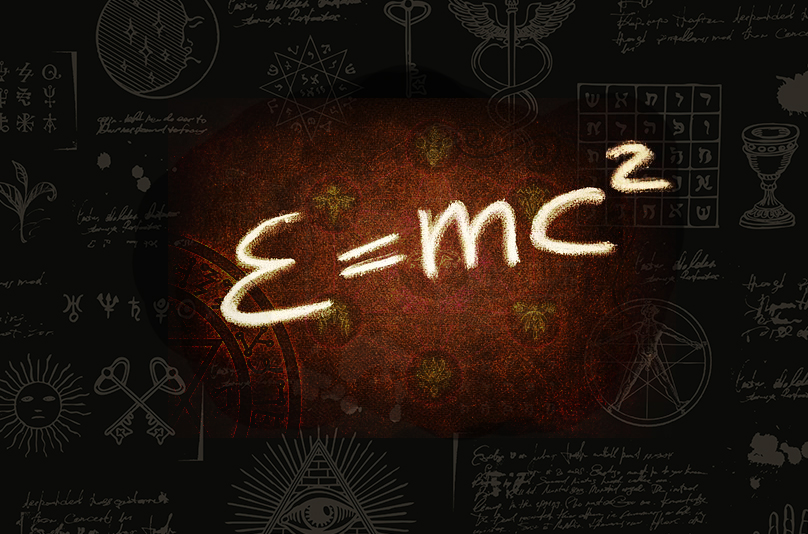"The universe consists of vibrations, frequencies, and energies."
"Reality is an interpretation of sensory feedback."
"Shaping reality is the key to self-improvement."
“The way we have been perceiving life needs to be rolled away, so that which is true can appear.” – Michele Longo O’Donnel, creator of Living Beyond Disease
The Pillars of Reality are about the Chrysalis understanding of reality. Before taking a step into Chrysalis, I want you to reflect on the word “reality”. What is reality to you? What is your reality like?
Reality and conception of reality, or world view, are a very important subject of research for Naos tis Chrysallis. Every Chrysalid is to independently study for example the basics of metaphysics and ontology and to reflect on the very being of existence. The Pillars of Reality are an extremely important subject of study since an essential part of Chrysalis are the effects of ritualistic acts and so called “reality shaping”.
What is existence after all? What exists? What do things that exist have in common? Are free will and action or the mind and mental phenomena possible in a world consisting of dynamic matter, ruled by the laws of nature?
From the aspect of materialism, reality is matter. From the perspective of physicalism, everything that exists is physical or supervenes the physical. Naturalism holds that nature includes everything, and nothing outside of it exists. Then again, the soulifying view of idealism suggests that reality is spirit.
The Temple underlines a subjective and idealistic point of view, according to which existence depends of consciousness. An opposite point of view is ontological objectivism and materialism, according to which there is always some sort of reality regardless of consciousness. By no means is Chrysalis denying this, or the sciences. On the contrary! The natural sciences are very loved by Naos tis Chrysallis, and the Temple has its own kaleidoscope, or group, researching structures of this kind.
For instance, the fact that we cannot observe something through our senses doesn’t mean it does not exist. However, the subjectivist point of view matters the most in an individual’s life and managing it. Once we understand the subjectivist point of view to reality, we get closer to objectivism: once a person understands his reality is a subjective interpretation of sensory feedback, he can modify how he interprets this feedback. This interpretation in turn shapes the person’s interaction with his surroundings.
However, there’s no need to stay in practical and social topics to find signs of reality not being identical for everyone. According to Einstein’s E=mc2 principle, distances and time intervals are not universal, but instead dependent on who measures them. In a sealed, frameless space it is impossible to say who is moving as long as the target is not accelerating. Christophe Galfard demonstrates this with the following example: You are floating in space in your spacesuit. Two other persons in spacesuits glide past you at a dizzying speed. You contact them to express your commendations to them, but in answer they claim they weren’t moving—you were. Both would be correct in this situation. In case physics lessons are not fresh in your memory, I recommend you do some research into the speed of light and related concepts. For example, were you to travel at the speed of light, your time would stop, and distances would shrink. Of course, it is worth taking note that only particles without mass can actually travel at the speed of the light. But, in any case: E=cm2 overall has awakened mankind to consider many things from new aspects, i.e. it has reshaped our conception of reality.
A human being is not merely matter, but constantly moving energy.
Synesthesia is an interesting avenue of examining the subjective conception of reality and the effects of the senses on how we see reality. Synesthesia means that two or more senses of a person unintentionally, repeatedly, and automatically combine. For example, names and words may have a taste (“Lexical-gustatory synesthesia”), or a number repeatedly has a clear connection to a color (“Grapheme color synesthesia”)—sometimes even a persona.
A common example is photism, i.e. seeing music in one’s field of view in a very concrete way. A person psychosomatically observes in his field of view flashes of light and colors directly connected to the music the person is hearing. This phenomenon is also typically experienced under the influence of hallucinogens like LSD or psilocybin. In rarer forms, like the “Mirror-touch” synesthesia, a person can have a direct physical sensation of what he sees someone else feel, like a knock on the shoulder. Synesthesia is caused by the neural circuitry of the brain not diverging in a normal way but having formed links between two areas in the brain that respond to different stimuli. Can number 6 permanently be red? If it can, what is reality? That the number is red? That the person has a structural or chemical condition in his brain that interprets the number 6 to be red, even though the light in the number isn’t directly red? Then again, if everything can be explained by being “an interpretation of the brain”, where goes the line between cerebral interpretations we accept as part of reality and those we don’t?
Usually the answer would be that more or less everything that can be repeated and demonstrated to the majority can be considered real. But is it that simple?
According Young and Helmholtz’s theory, one of the three human cone cell types senses the color blue, the second senses red, and the third senses green. This is what the RGB color system is based on. In the visual arts, on the other hand, the “primary colors” are blue, red, and yellow, which in turn is based on the fact that secondary colors can be mixed from these colors, but these colors cannot be mixed from others. Now imagine that you could see colors that don’t even exist in your current reality. A good example of this are many birds, especially parrots. One of the most fascinating features of parrots is their vision, particulary their color vision. They possess an entire cone cell type more than humans do, and this means their color vision is much broader than that of humans. They can also detect the UV versions of the colors. And there’s more! The eye of the parrot is very fast to support flying, so for example TV, watched through the eyes of a bird, would look like choppy stop-motion. How color is perceived depends on the light (which is the source of color), the manner in which an object responds to the color, and the attributes of the eye looking at the color.
In addition to sensing UV and infrared light, a Japanese swallowtail species has been found to have a pentachromatic color vision, meaning it has receptors sensitive to as many as five different wavelength bands. In contrast, there are also animals with color vision much narrower than that of humans. Thus the fact we cannot see a certain wavelength doesn’t mean it doesn’t exist. Quite a lot of research has however been conducted on light, and these realities not visible to us are scientifically verifiable. But what about all that which we have yet to be able to prove, but have definite observations of? Or phenomena that break the laws of physics?
We currently recognize 95 atoms, of which hydrogen is the smallest and unbiunium the largest. Particles smaller than these are the chargeless neutrons and the positively charged protons. Protons and neutrons are composed of quarks, which are, at least for the time being, the smallest unit we are aware of. They are subatomic particles, the fundamental building blocks. Then we have neutrinos. These little shits are a mystery surrounded by a wide variety of theories. A neutrino cannot be detected, it can only be observed. Neutrinos can also penetrate any material, and it is estimated that a lead wall as thick as one light year would be needed to stop a neutrino. A probable explanation to this is that a neutrino only knows the weak interaction, or the weak nuclear force. You can surely imagine that neutrinos and researching them has been no simple task.
On the other hand, there’s no need to go to the subatomic level to demonstrate differences between realities. The Italian quantum physicist Carlo Rovelli has shed light upon the conception of time, stating that time behaves totally differently from what is commonly thought. For instance, time is not the same everywhere, but there are exceptions in different environments. This is not just an abstract concept, but a difference that can directly be measured and observed: one of two friends moves up the mountains, the other down to the lowlands. When they meet after several years, the one living up in the mountains has aged more, and the clock of the one living in the lowlands is behind.
A large mass slows the passing of time by bending an indentation into space-time. Individual time therefore depends on how close you are to heavy objects. This, however, is not all. Movement also affects time. Thus the universe has no common present time. Only countless different times. There is no common, steady flow of time.
A sense-centered and subjectivist conception of reality in everyday, earthly life is a key factor in changing yourself. An easy way to think about applying this kind of a conception of reality is, let’s say, to think of a conflict between two people, in which both are absolutely certain that their own experience is more real than the other’s. A particularly radiant person, a so called prefulge, can instead keep calm while being targeted by haters by remembering that there are factors in the reality of the attackers that cause them to behave the way they do. Finding reasons is not supposed to mean that something must be accepted or allowed, but for example to learn to let go of things that bear no significance for your reality.
A concrete voice in your head might be “non-existent” or “not real”, but something happens in you neurobiologically that gives rise to this voice and causes it to become a clearly heard sensory experience. The voice in your head might not be a part of someone else’s reality—but it is a part of yours. Does it then exist? What is existing?
The ability to shape the conception of reality that affects yourself is the key to self-development. Once a person learns to understand the nuances surrounding the concept of reality, and to distinguish how large a part of her own reality and truth arises from her own interpretation, the person also learns to shape the reality around her.
One essential element of the Temple of Chrysalis is Reality shaping. Reality shaping might sound weird and “supernatural”, and in the eyes of our limited reality it undoubtedly is just that. But instead of believing I’m going to feed you some unquestioned hocus-pocus, I want you to open your mind and consider the matter. What if the world is more than what school books are telling you it is? What if there is more than we occasionally fanatically want to imagine? What if magic in actuality is explainable scientifically?
A legendary quote from the physicist and inventor Nikola Tesla about understanding the universe through energy, frequency, and vibration sheds light on the basics of how the cosmos works:
“A single ray of light from a distant star falling upon the eye of a tyrant in bygone times may have altered the course of his life, may have changed the destiny of nations, may have transformed the surface of the globe, so intricate, so inconceivably complex are the processes in Nature.
In no way can we get such an overwhelming idea of the grandeur of Nature than when we consider, that in accordance with the law of the conservation of energy, throughout the Infinite, the forces are in a perfect balance, and hence the energy of a single thought may determine the motion of a universe.
If you wish to understand the universe, think of energy, frequency, and vibration”
This outlook will aid you in the moments when I ask you to pay attention to something like your vibration. Though, spirituality being in question, we will be talking about energy, frequencies, and vibrations with a more abstract touch as well, it is critically important to understand that these phenomena are real, scientific, and existent. Accept them as a part of your reality and take them farther in your mind than you have before. And then: begin to shape them.
With love,
Luminary
Practice your intuition and conception of reality
Exercise 1
Examine the following things and come up with two alternative explanations for each from the viewpoint of the Pillars of Reality:
- The Mandela effect
- ASMR (Autonomous Sensory Meridian Response)
- Frisson
- Synesthesia
Exercise 2
Go for a walk. Find repeating patterns. Pay particular attention to fractals such as tree branches.
Exercise 3
You meet a person blind from birth. He asks you to explain what colors are and describe what each color looks like. How would you describe them for him?
Sources:
- Ajan luonne (L’ordine del tempo). Carlo Rovelli, translated into Finnish by Hannu Karttunen. Ursa 2018.
- How to understand E=m2. Christophe Galfard. Quercus Editions Ltd, 2017
- Being in Balance. Wayne W. Dyer. Ars Vivendi, 2006
Author: Luminary
Translation: Halla










No comment yet, add your voice below!